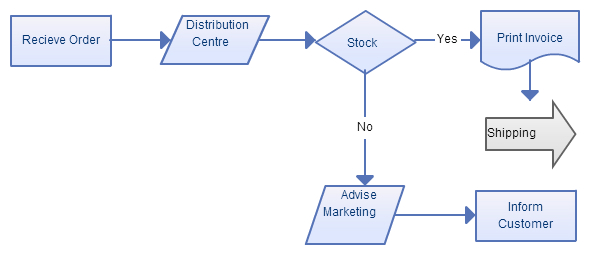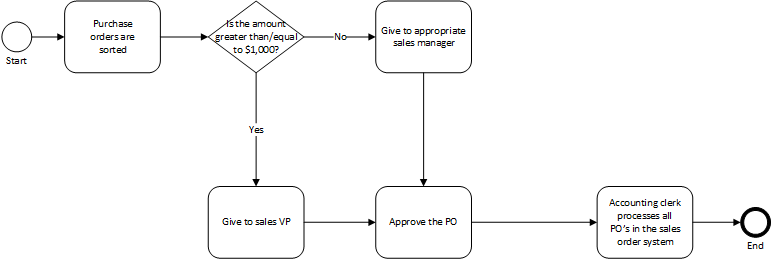
Is Your Process Holding You Hostage?
Your people will come and go. Your offices will change. Your equipment will be replaced. As a business owner, the one thing you have absolute control over is your process.
Entrepreneur Kyle Gray says “Processes are something nearly every entrepreneur struggles with, especially in the early stages of their business. But nearly every successful entrepreneur has found a way to do them well.”
Your process is simply a collection of linked tasks that deliver your product or service. Some businesses have small processes with few steps. Others have dizzyingly complex processes with hundreds of steps, requiring the involvement of countless people. Your situation and results will vary.
A business depends on its process to bring in revenue and grow its market share. Smartly defined, well executed processes allow companies to spend more resources on growth. Poor, inefficient processes consume resources (money and human capital) and handicap growth.
[content_upgrade cu_id=”234″]A strong business process isn’t rigid and unchanging. Download our free guide to learn how to add flexibility to your process.[content_upgrade_button]Click Here[/content_upgrade_button][/content_upgrade]
 Source: creately.com
Source: creately.com
 Source: laserfiche.com
Automation can be built into your tools to manage projects and policy compliance, generate alerts, improve the customer’s experience, and countless other tasks.
[content_upgrade cu_id=”234″]Does your process have the flexibility it needs to change? Download our guide to learn the steps you can take make your process fluid.[content_upgrade_button]Click Here[/content_upgrade_button][/content_upgrade]
The most important thing you should take from this article is the importance of control. Your business is the process. If you control it, you’ll always be the one steering your company. If you don’t, you’ll always be a hostage.
Source: laserfiche.com
Automation can be built into your tools to manage projects and policy compliance, generate alerts, improve the customer’s experience, and countless other tasks.
[content_upgrade cu_id=”234″]Does your process have the flexibility it needs to change? Download our guide to learn the steps you can take make your process fluid.[content_upgrade_button]Click Here[/content_upgrade_button][/content_upgrade]
The most important thing you should take from this article is the importance of control. Your business is the process. If you control it, you’ll always be the one steering your company. If you don’t, you’ll always be a hostage.
6 Signs Your Process is Limiting
Sometimes it’s tough to make ourselves aware of our own limitations. We think, “Sure, some days at work will be hard. That’s just how it goes.” We get caught up in our own little bubbles and don’t realize there’s a better way. This is one of the reasons networking with similar businesses can be so valuable. You can get a glimpse into how other companies operate, which may spark your own ideas. You’ll say, “Oh, I didn’t realize there’s a better way to do that…” Nevertheless, there are some obvious signs that your process is restricting your growth. If you experience any of these symptoms, it’s time to evaluate your process.1. You’re relying on legacy software
At one point, your company may have obtained an application or tool that served its process perfectly. Over time, however, businesses and the way we do business change. No tool will ever be suitable forever. Depending on the age of your legacy software, it might be using outdated technologies that require pricey specialists to repair or modify. If your system uses COBOL or mainframes, you know what I mean. Many companies restrict themselves to a tool they’ve been using for years. Older employees resist change because it’s what they know. Executives risk change in hopes of squeaking out a little more return on their old investment. But if a legacy application isn’t supporting today’s process, it’s actually a liability that’s costing money.2. You’re using multiple off-the-shelf tools
Prepackaged tools are designed to be sold to wide audiences. Often developers won’t include a feature you would use if only a small number of businesses need it. They’re also guaranteed to come with some bloated features you don’t need, because they appeal to other businesses. In both cases, off-the-shelf tools don’t perfectly fit your business. Imperfect tools lead businesses to use multiple tools (or multiple instances of the same tool, like with Excel spreadsheets) to accomplish simple tasks. For example, you may pull data together from three or four sources to create a comprehensive report. Exporting and importing data by hand is one of the leading causes of simple mistakes that eat up time and dollars. Plus, when information isn’t centralized, there is always some loss. Errors and wasted time are common in customer service, operations, account management, marketing, development, and even your base operations like accounting and legal, when everyone doesn’t know the full picture.3. You’re having a hard time training new employees
Complex processes that involve pages of steps and multiple tools are tough to teach to new employees. You’ll spend more time in the employee onboarding phase and more time hovering over the employee answering the same questions. But the expenses don’t stop there. Complicated processes raise the bar for the type of employee you have to hire. You need someone who pays careful attention to detail and doesn’t mind following tedious steps. Furthermore, a multi-step process invites frequent mistakes, which can be costly.4. Only certain people understand the process
If you lose entire days (or portions of a day) because someone went home sick, your process is holding you back. You should never create an environment where only one person understands how to do a particular job. What happens if that person leaves for long term family or medical care, or finds another job? Creating redundancy is critical, especially if their portion of the work directly relates to how you make money. Here’s a sample process flowchart for an ecommerce store. Even if this company only needed one person to manage this order process, the process itself should be understood across multiple roles. Source: creately.com
Source: creately.com
5. The owner doesn’t understand the process
This is the deadliest sin of operating a business. Too often we meet with business owners (or general managers) that don’t understand how a piece of their business operates. I’m not talking about little components here, like how one company collects timesheets and sends them to human resources. Some leaders are blind to big components of their company, like how engineers complete projects or how much latitude salesmen have. In most cases, this happens when the current owner is not the original owner. They rely on the one or two key people to get the work done and don’t concern themselves further because there’s never been a problem. It is absolutely critical that someone in charge who has investment in the company (that is, someone who wouldn’t pack up and quit one day) have a comprehensive understanding of the entire business process. Yes, redundancy is important, but so is a high-level view.6. You have less and less control each year
As your business needs change, a limiting process isn’t able to keep up. Perhaps your clients are asking for security certifications that you can’t provide. Customers may want user accounts so they can monitor project milestones, but you don’t have a platform that displays all the necessary information. Or perhaps you just can’t find ways to upgrade without breaking your current tools or adding even more steps. Over time, this problem will only get worse. Clients and customers will expect more. Your business will change, serve different customers, or offer new services and cut others. Without control, you’ll struggle to compete.How to Break the Chains
If you feel like your process is holding you hostage, you need to begin taking steps to add flexibility to your business. Your process should be something you control, not something that controls you.Step 1: Evaluate if your process is still right for your business
You should never follow a process because “that’s how it’s always been done.” Instead, regularly evaluate if your work actually supports your business goals. You may find that your staff are completing irrelevant work and not working on tasks that will achieve results. Just last year, we helped a company where an employee was tasked with generating a weekly report, but half of the report’s information applied to a service the business was no longer offering. In this case, their process was extraordinarily inefficient.Step 2: Determine if your tools support the correct process
Once you’ve decided if your process supports your goals, evaluate whether the tools you’re using support you. Are they getting the job done? Do they require too much human involvement? Do they rely on one person too much or horde knowledge in one place (like one person’s brain)? If your tools don’t serve you, it’s time for a new one.Step 3: Translate employee knowledge into a tool
To protect yourself, it’s important that each employee’s knowledge and role are translated into a business resource. If, for example, one employee is tasked with collecting monthly sales numbers, they shouldn’t be the only one to know the location of that data. Interview each employee who is involved with the process you are updating. Ask penetrating questions about how they do their job, where they get their information, and with whom they collaborate. Have them walk you through their day-to-day so you get an idea of the parts of their job that can be accomplished with your new tool.Step 4: Automate whatever you can
Automation is the best tool any business can invest in. It improves operational efficiency (faster work and fewer errors) and frees your staff for more creative work, like solving other challenges or growing your company. “For many business leaders, automation can be the answer they are looking for,” say automation experts at Kissflow. For instance, look at this sample process for handling purchase orders. An inefficient process would have a human performing each step. A process that smartly used automation could complete each step except for “approve the PO.” Source: laserfiche.com
Automation can be built into your tools to manage projects and policy compliance, generate alerts, improve the customer’s experience, and countless other tasks.
[content_upgrade cu_id=”234″]Does your process have the flexibility it needs to change? Download our guide to learn the steps you can take make your process fluid.[content_upgrade_button]Click Here[/content_upgrade_button][/content_upgrade]
The most important thing you should take from this article is the importance of control. Your business is the process. If you control it, you’ll always be the one steering your company. If you don’t, you’ll always be a hostage.
Source: laserfiche.com
Automation can be built into your tools to manage projects and policy compliance, generate alerts, improve the customer’s experience, and countless other tasks.
[content_upgrade cu_id=”234″]Does your process have the flexibility it needs to change? Download our guide to learn the steps you can take make your process fluid.[content_upgrade_button]Click Here[/content_upgrade_button][/content_upgrade]
The most important thing you should take from this article is the importance of control. Your business is the process. If you control it, you’ll always be the one steering your company. If you don’t, you’ll always be a hostage.

